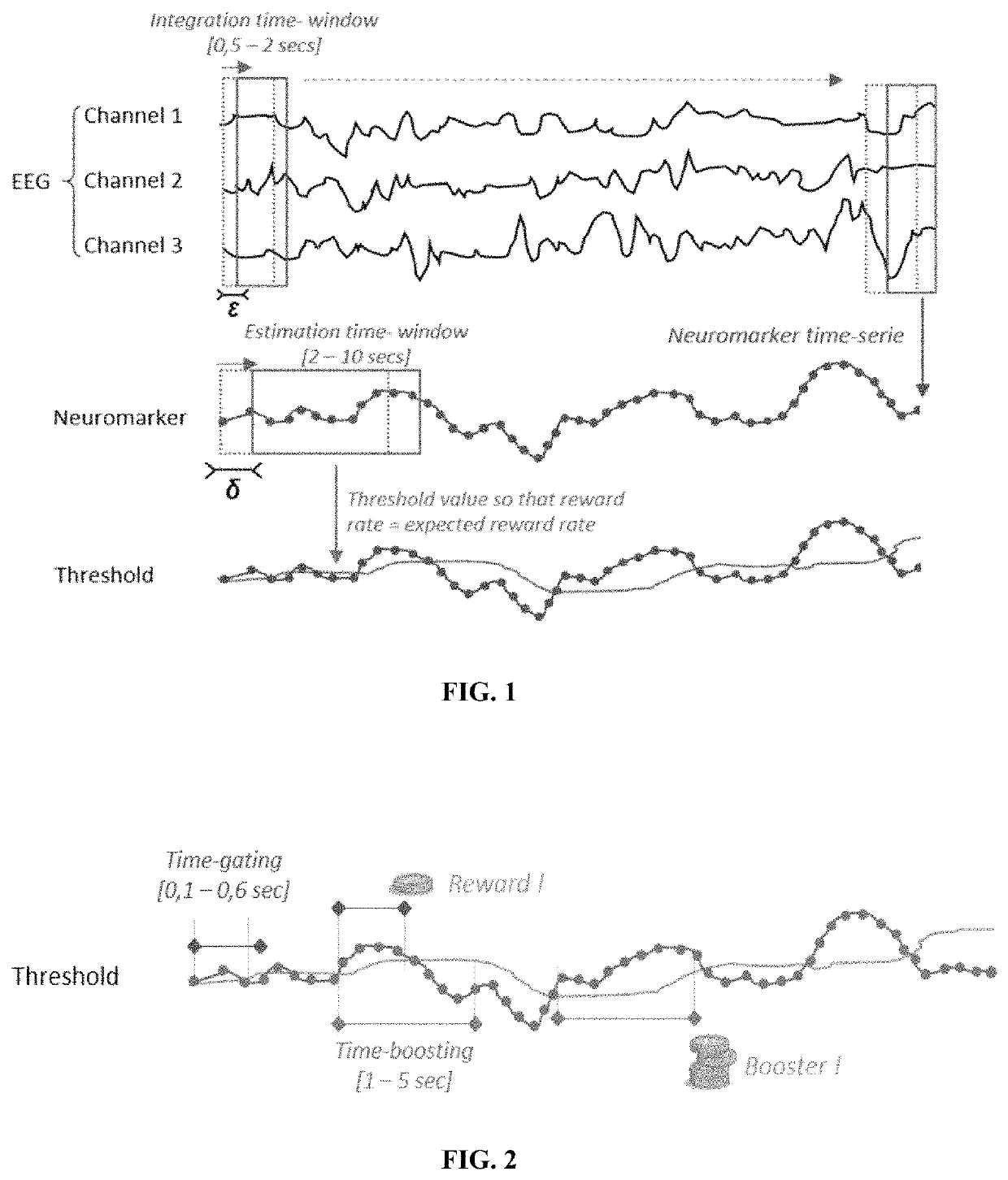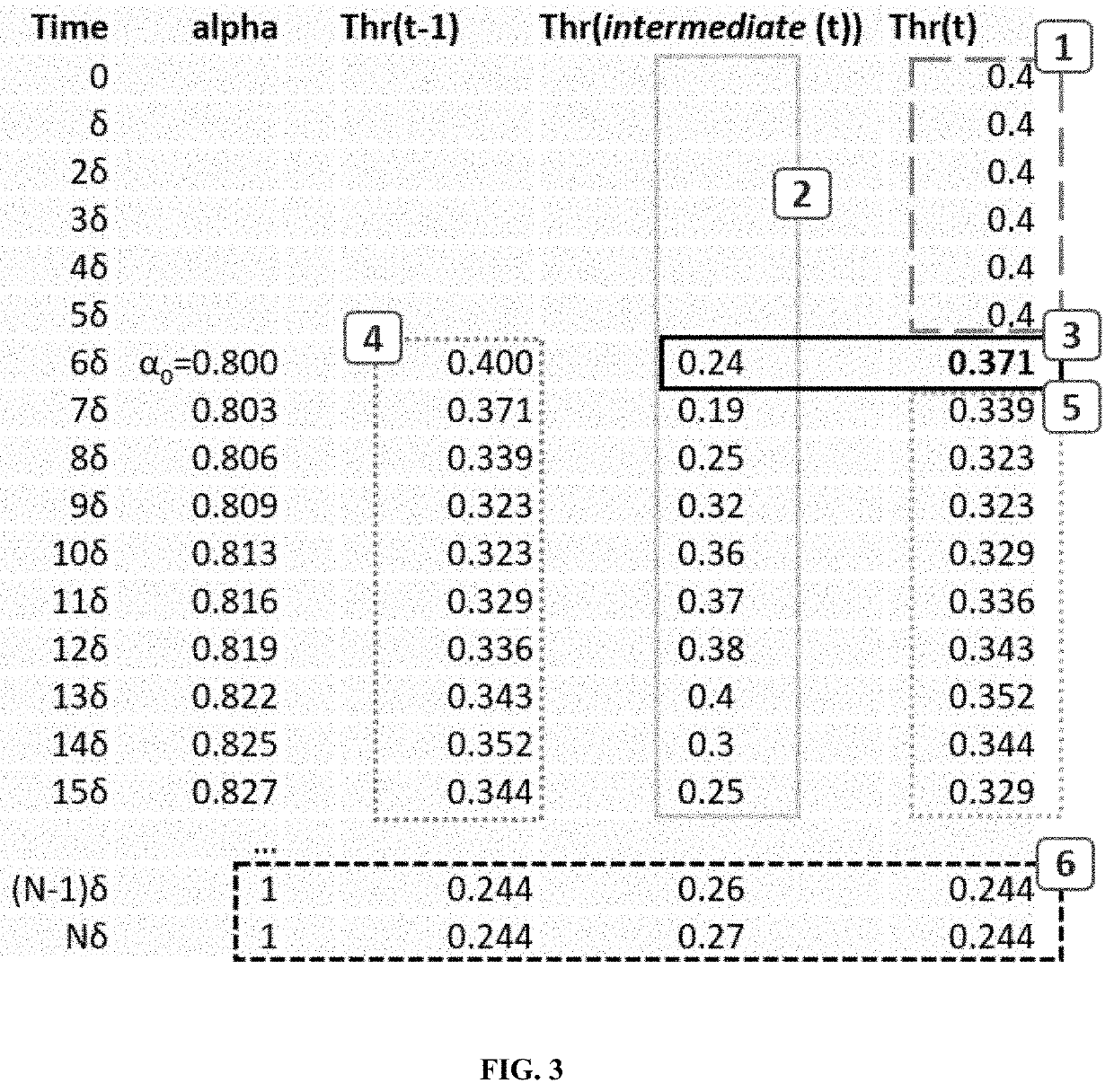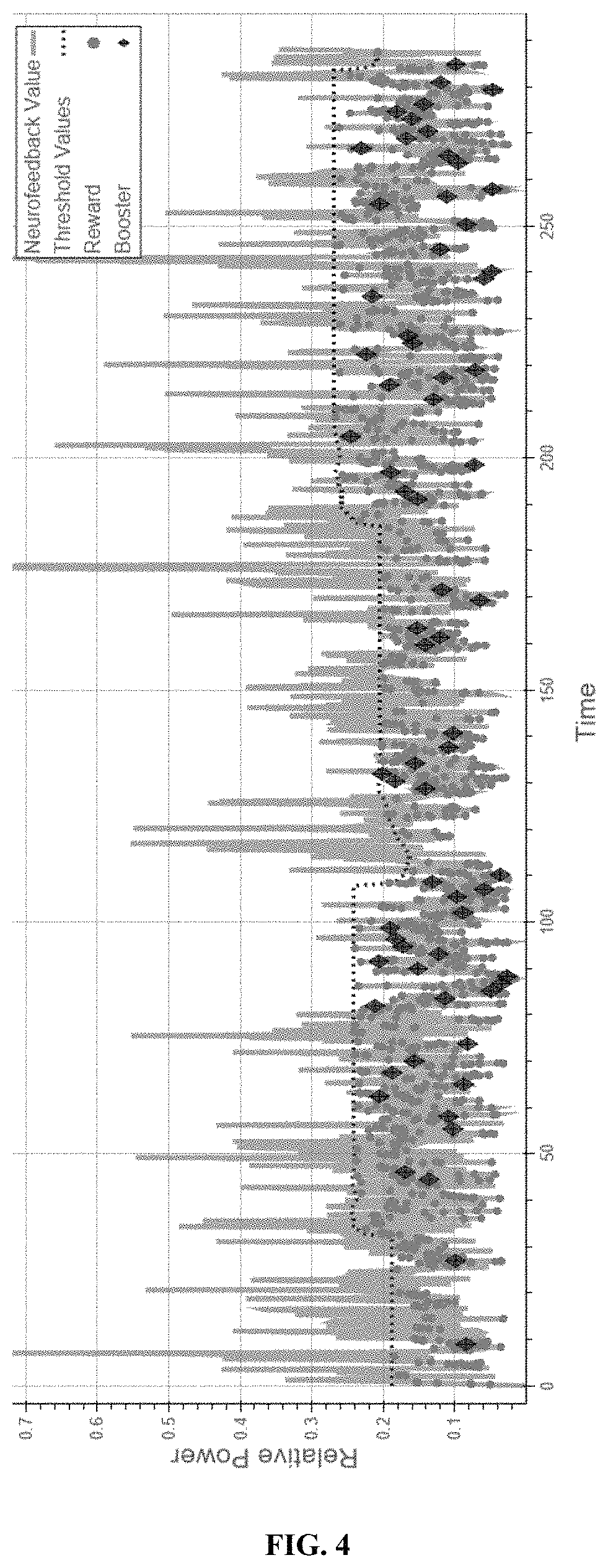Automated thresholding for unsupervised neurofeedback sessions
a neurofeedback and automatic technology, applied in the field of neurofeedback, can solve the problems of limiting the availability of neurofeedback sessions, limiting feasibility studies and repeatability, and providing negative feedback for undesirable or deviant brain activity
- Summary
- Abstract
- Description
- Claims
- Application Information
AI Technical Summary
Benefits of technology
Problems solved by technology
Method used
Image
Examples
example 1
[0125]The present invention was implemented with a set of parameters selected in order to design a threshold that complies with the following:[0126]initializes on a calibration session;[0127]adapts to data rapidly and relatively constantly;[0128]remains stable over time in order to challenge the subject; and[0129]resets when the reward percent is too far from the expected reward ratio for too long.
[0130]The chosen parameters are:[0131]Growth factor r=0.02 —Reward estimation time (s)=30[0132]Learning coefficient k=1 —Reward ratio tolerance (%)=15[0133]Expected reward ratio (%)=60% —Reward ratio tolerance time window (s)=30[0134]Time gating γ (s)=0.500 —α0=0.8[0135]Time boosting β (s)=2
[0136]The result is displayed in FIG. 4. The threshold is constant at the beginning of the signal, as it has been previously initialized on the calibration. After approximately 30 seconds in the signal, the threshold resets, and computes its new value based on the intermediate threshold's value computed...
example 2
[0137]The present invention was implemented with a different set of parameters.[0138]Growth factor r=0.01 —Reward estimation time (s)=30[0139]Learning coefficient k=1 —Reward ratio tolerance (%)=15[0140]Expected reward ratio (%)=60% —Reward ratio tolerance time window (s)=30[0141]Time gating γ (s)=0.500 —α0=0.3[0142]Time boosting β (s)=2
[0143]The result is displayed in FIGS. 5A and 5B. As disclosed, with lower values of r, the computed threshold is more adaptive to data but takes more time to converge toward a constant value, resulting in large oscillations before the threshold stabilization (FIG. 5A). Likewise, lower values of the initial value of α (i.e. α0) is associated to an unsteady threshold that oscillates a lot (FIG. 5B).
PUM
 Login to view more
Login to view more Abstract
Description
Claims
Application Information
 Login to view more
Login to view more - R&D Engineer
- R&D Manager
- IP Professional
- Industry Leading Data Capabilities
- Powerful AI technology
- Patent DNA Extraction
Browse by: Latest US Patents, China's latest patents, Technical Efficacy Thesaurus, Application Domain, Technology Topic.
© 2024 PatSnap. All rights reserved.Legal|Privacy policy|Modern Slavery Act Transparency Statement|Sitemap



